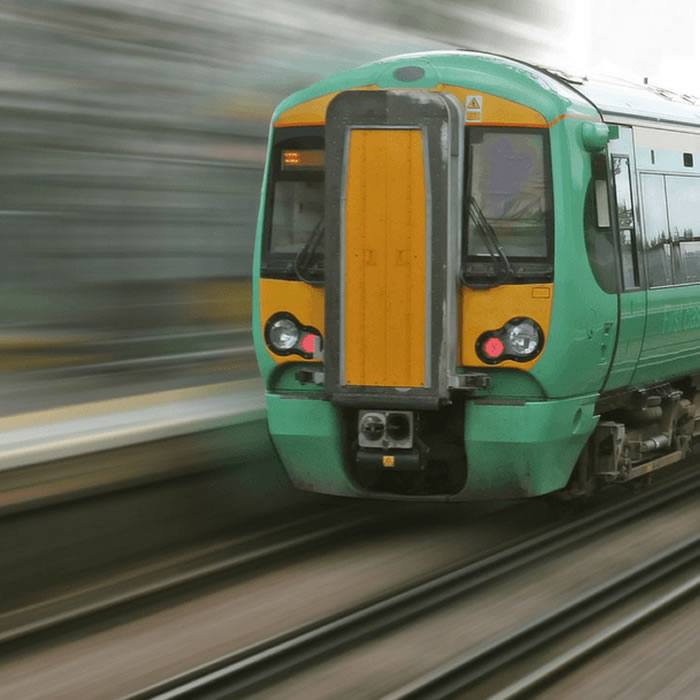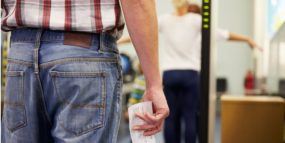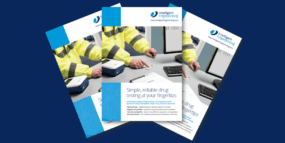Rail Professional: A modern approach, written by Dr Paul Yates
09.28.2016

Writing for Rail Professional, Dr Paul Yates considers how new fingerprint-based, non-invasive drug screening technology could facilitate drug testing in the rail industry.
Drug use is more common among the UK workforce than you may think. According to figures from the Home Office, last year one in 12 working age adults (16-59) took an illicit drug (1). Department of Health figures show that almost one in 10 of the UK workforce admits to recent drug use (2). And a survey of medium to large-sized firms revealed that drugs and alcohol contribute to 26 per cent of workplace accidents which cost the UK £4 billion every year (3).
It is an offence for rail employees to carry out, and for railway employers to allow employees to carry out, safety-critical work while under the influence of drugs or alcohol. This legislation is set out in Section 27 of the Transport and Works Act 1992, and is enforced by the British Transport Police (4). The term ‘drugs’ includes controlled drugs, often referred to as ‘prohibited’ or ‘illicit’ drugs or ‘drugs of abuse’. The term also includes other substances which can affect a person’s ability to perform their duties, including prescribed and over-the-counter medicines (5). The term ‘safety-critical’ does not just apply to driving trains, but to tasks performed throughout the rail industry by rail workers, signalling staff and many others. Drug misuse can be difficult to detect, with one in three UK employers saying they cannot identify when a worker is under the influence of drugs (6). In a safety-critical working environment such as the rail industry, screening to detect drug abuse is particularly important. Increasingly, even those employees who do not have safetycritical duties are expected to undergo drug testing (7).
As anyone working in the industry knows, passengers’ and colleagues’ lives depend on the alertness of railway employees, and being under the influence of drugs or alcohol can have catastrophic consequences. A public inquiry into the Cannon Street Station rail crash of 1991, in which two people were killed and over 500 injured, blamed the accident on driver error and ageing rolling stock(8). For reasons which were never established, the 25-year old driver, Maurice Graham, failed to brake properly causing the train to crash into the buffers, with tragic results. A drug test three days after the crash revealed traces of cannabis in Graham’s blood. And, while the inquiry found there was insufficient evidence to suggest that drug use had caused the accident, the inquiry report recommended the introduction of mandatory drug and alcohol tests for employees involved in safety accidents and called for the criminalisation of railway employees with safety responsibilities being impaired by alcohol or drugs. At the time of the accident it was illegal for railway staff to be under the influence of alcohol but there was no equivalent law for drugs. The inquiry’s recommendations were implemented through the passing of The Transport and Works Act 1992.
Pre-employment and random or unannounced screening can act as a deterrent to drug use. Drug testing is also used post-incident to investigate whether employees are culpable. Rail Safety and Standards Board (RSSB) guidance advises that managers should periodically test staff carrying out safety-critical tasks. This should include both pre-planned testing as part of a periodic age-related medical and random or unannounced testing(9). RSSB advises that managers should test all persons appointed to posts involving safety-critical tasks before they first undertake them (9).
RSSB recommends that managers determine which drugs they should screen for based on a range of factors. These factors include whether a reasonably practicable test exists, the likelihood of a drug or type of drug being taken and the ability of a drug to impair work performance(9).
Strengths and limitations of existing drug tests
The most common drug screening methods involve analysis of urine, oral fluid (saliva), hair or blood samples. Of these methods, urine testing is the most widely used by train companies. With a usual detection window of up to two to four days, urine tests are low-cost but have the potential to be cheated using urine substitutes or adulterants. Oral fluid (saliva) testing is less invasive, and it has a shorter window of detection of up to one to two days but samples can also be adulterated. Hair testing provides the longest detection window, detecting drug use for up to three months previously depending on the length of hair tested. However, hair testing cannot give any indication of recent drug use. Blood testing is the most accurate way of confirming recent drug usage but it is also the most expensive and time-consuming, requiring sample collection by a qualified phlebotomist and laboratory analysis.
Most drug screening methods rely on the invasive collection of biohazardous body-fluid samples. This can prove costly, time-consuming and, for urine (the most commonly used test), difficult to administer. This is because of the need for trained, gender-specific collectors, specially prepared collection areas and specialist waste disposal facilities. Some of these methods also raise issues about respecting the privacy of the employee or potential employee being tested. For example, urine sample collections are usually observed to prevent sample adulteration or substitution, which can be undignified for both the employee and the observer.
The different issues associated with existing drug screening methods can reduce the rail manager’s ability to carry out effective drug screening and these drawbacks are most evident for random or unannounced screening where testing must be spontaneous and immediate in order to deter and detect drug use. It is clear that current drug screening methods have their limitations and an alternative, simpler and less invasive approach would improve drug screening programmes. Desirable drug test attributes would be a quick, safe and noninvasive collection method that is portable and easy to administer, with immediate and reliable test results.
New technology in development
We believe a new approach, developed in Britain, has the potential to change the way drug screening is carried out. The technology, brought to the market by Intelligent Fingerprinting, works by analysing fingerprint sweat to detect drug metabolites, the chemicals that are produced after a drug breaks down in the body. The fingerprint sample is collected within seconds, by simply pressing the finger onto a collection cartridge which is then inserted into a reader. The reader analyses the sweat in the fingerprint, providing a pass or fail for different drug groups in less than 10 minutes. It’s the world’s first portable, fingerprint-based drug screening system and presents the opportunity to screen for multiple drugs of abuse in one test.
This emerging technology could help the rail industry to keep up with increased drug prevalence among the UK workforce, and the accompanying regulations surrounding drug misuse in safety-critical areas. The rail industry can use new technology to respect workers’ requirements of privacy and dignity, while protecting employer liability and helping to ensure public safety. Drug screening programmes for the rail industry have the potential to become more cost-efficient and effective, serving as a true deterrent to drug use.
Paul Yates is business development director at Intelligent Fingerprinting.
References: 1. The Home Office, Drug Misuse: Findings from the 2014/15 Crime Survey for England and Wales (2015) 2. Department of Health, United Kingdom drug situation: annual report to the European Monitoring Centre for Drugs and Drug Addiction (EMCDDA) 2012. http://www.cph.org.uk/wp-content/ uploads/2013/03/23779-FOCAL-POINT-REPORT2012-B5.pdf 3. Chartered Institute of Personnel and Development research: http://realbusiness.co.uk/article/26589- drugs-in-the-workplace-a-4bn-problem-thatemployers-ignore 4. Section 27 of the Transport & Works Act 1992 5. RSSB: Guidance on the Management of Drugs and Alcohol Issue two: December 2012 Rail Industry Guidance Note for GO/RT8070 (2012), p. 9. 6. Synergy Health survey: survey of 200 medium to large sized covering approximately 26,000 employees (2014): http://realbusiness.co.uk/ article/26589-drugs-in-the-workplace-a-4bnproblem-that-employers-ignore 7. Simon Robinson, Not a risk worth taking (2015): http://www.railpro.co.uk/railpro-magazine/ magazine-archives/june-2015/not-a-risk-worthtaking 8. HM Railway Inspectorate, A report of the collision that occurred on 8 January 1991 at Cannon Street Station (1992): http://www.railwaysarchive.co.uk/ docsummary.php?docID=177 9. RSSB Guidance on the Management of Drugs and Alcohol (2012).
Rail Professional September 2016
(Permission to publish this PDF kindly provided by Rail Professional.)



